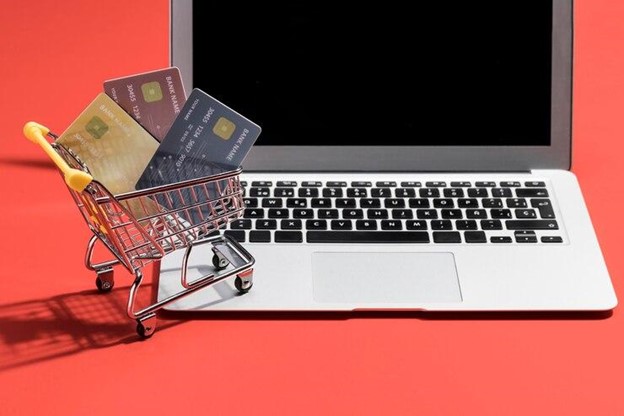The Impact of Installment Payments on the Retail Sector

Last year, the retail sector in UAE was worth USD 30.17 billion, and by 2029, it is expected to grow at a 6.2% rate. A wide array of products, the easy availability of international and luxury brands, and a fast-growing economy are some of the key reasons driving this retail boom. Moreover, retail businesses of all kinds, whether they are dealing in textiles, jewelry, electronics, furniture, or décor accents, are increasingly shifting to the digital space. Besides the widespread penetration of internet and mobile devices, the emergence of tech-savvy and young customers is a major reason behind this. In fact, by 2025, the ecommerce market in UAE is poised to hit the USD 17 billion mark.
So, in such a scenario, it is not enough to just take your retail business online. You need to stay competitive as well. And offering financial flexibility to shoppers is a smart way to do the same. This brings us to the concept of installment payment, which enables customers to pay off the total bill in parts over a span of a few months instead of paying it all in one go. Since such installment plans are often interest-free, shoppers can easily make purchases without stressing about any additional burden caused by delayed payment. Now, let’s find out how installment payment schemes are benefiting the retail sector in UAE.
Installment Payments are Revolutionizing the Retail Landscape
As a modern retail merchant, you surely understand how consumer behavior has evolved with the advent of online transactions. Like everywhere else in the world, shoppers in UAE are looking for simple, fast, and secure ways to buy everything from necessities to luxuries. And with a reliable and efficient online payment gateway, you can ensure that too. However, introducing installment payments can add to the customer experience and benefit your business in multiple ways:
-
Higher Order Value
The installment payment option allows consumers to shop for more than they initially planned or thought they could afford. For instance, if they were planning on only buying sleepwear, they might end up adding expensive party dresses to the cart once they realize they don’t have to make the entire payment upfront. Hence, your sales and revenue will increase. Installment payment can especially help you get bigger orders during the festive season when people tend to shop more for their own needs and loved ones.
-
More Conversions
Very often, those who visit your website or explore your offerings might have a tough time deciding whether they should actually make a purchase. They might be worried about impacting their monthly budget and can even abandon carts after adding a number of items to the same. However, if you offer an installments payment option, potential customers will know that even if their current paycheck can’t afford it all, they will be able to repay gradually with the next few months’ paychecks. This will give them the confidence to check out or transition from the consideration to the decision stage.
-
Expanded Customer Base
If you have studied recent shopping trends, you might have noticed how millennials and Gen Z consumers prefer buying retail products online and aspire to own branded and even luxury pieces. However, those who have started working recently or get a fixed allowance from parents might not be able to afford pricey items in one go. By allowing them to pay in installments, you can make it easy for such shoppers to own their favorite pair of sports shoes, watch, smartphone, or handbag. Even those who hesitated to buy from you before will now flock to you, thereby expanding your customer base. The same idea holds true for retired consumers or senior citizens living on a fixed income.
-
Greater Probability of Repeat Purchase
To thrive and grow in the retail sector, you must encourage customers to shop from you repeatedly and not just once. And that will be easy with installments payment. Once they realize how easy and frictionless it is to buy even high-end or limited edition products from you, they will keep coming back for more.
-
Better Brand Image
By offering financial flexibility through installment payment, you can earn your customers’ trust and confidence. They will view you as a progressive business that keeps up with their changing needs and spread the word as well. Naturally, this will lead to better brand awareness and create a positive impression in the minds of those who are yet to consider or buy your products. Your base of loyalists will also grow.
-
Easy Scalability
If you are planning to foray into new markets or geographies, offering the installment payment option is a great way to go about it. Everyone likes having choice and flexibility, irrespective of location, and by simplifying payments, you can win over potential customers wherever you go. This is especially important if you are selling big-ticket items like air conditioners, gold jewelry, designer clothes and shoes, or bespoke furniture.
-
Competitive Edge
Say, both you and a competitor brand offer smart devices. However, while you offer an instalment scheme, your competitor requires total upfront payment. Where do you think consumers will go? They will undoubtedly come to you, assuming both of you are equally popular, have the same range of products, and a similar pricing structure.
-
Immediate Crediting of Funds
With installments payment, your account is immediately credited with the total bill amount though the customer has the freedom to make part payments over a convenient period of time. This means, you don’t have to wait for them to pay off the entire bill so that you can get what is due to you.
Take Your Retail Business to New Heights with Installment Payment
As a forward-thinking retailer in UAE, offering financial flexibility through installment payments is the key to attracting attention, earning customer goodwill, driving more conversions, raking in more revenue, and growing your business fast. Just make sure you choose an online payment gateway from a provider like PayTabs, so that it supports this payment model and facilitates a smooth and hassle-free checkout experience. Assess the nature of your business and its distinct needs before picking a gateway that aligns with your budget as well.





